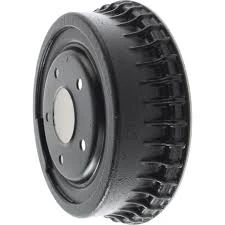
-
 Afrikaans
Afrikaans -
 Albanian
Albanian -
 Amharic
Amharic -
 Arabic
Arabic -
 Armenian
Armenian -
 Azerbaijani
Azerbaijani -
 Basque
Basque -
 Belarusian
Belarusian -
 Bengali
Bengali -
 Bosnian
Bosnian -
 Bulgarian
Bulgarian -
 Catalan
Catalan -
 Cebuano
Cebuano -
 Corsican
Corsican -
 Croatian
Croatian -
 Czech
Czech -
 Danish
Danish -
 Dutch
Dutch -
 English
English -
 Esperanto
Esperanto -
 Estonian
Estonian -
 Finnish
Finnish -
 French
French -
 Frisian
Frisian -
 Galician
Galician -
 Georgian
Georgian -
 German
German -
 Greek
Greek -
 Gujarati
Gujarati -
 Haitian Creole
Haitian Creole -
 hausa
hausa -
 hawaiian
hawaiian -
 Hebrew
Hebrew -
 Hindi
Hindi -
 Miao
Miao -
 Hungarian
Hungarian -
 Icelandic
Icelandic -
 igbo
igbo -
 Indonesian
Indonesian -
 irish
irish -
 Italian
Italian -
 Japanese
Japanese -
 Javanese
Javanese -
 Kannada
Kannada -
 kazakh
kazakh -
 Khmer
Khmer -
 Rwandese
Rwandese -
 Korean
Korean -
 Kurdish
Kurdish -
 Kyrgyz
Kyrgyz -
 Lao
Lao -
 Latin
Latin -
 Latvian
Latvian -
 Lithuanian
Lithuanian -
 Luxembourgish
Luxembourgish -
 Macedonian
Macedonian -
 Malgashi
Malgashi -
 Malay
Malay -
 Malayalam
Malayalam -
 Maltese
Maltese -
 Maori
Maori -
 Marathi
Marathi -
 Mongolian
Mongolian -
 Myanmar
Myanmar -
 Nepali
Nepali -
 Norwegian
Norwegian -
 Norwegian
Norwegian -
 Occitan
Occitan -
 Pashto
Pashto -
 Persian
Persian -
 Polish
Polish -
 Portuguese
Portuguese -
 Punjabi
Punjabi -
 Romanian
Romanian -
 Russian
Russian -
 Samoan
Samoan -
 Scottish Gaelic
Scottish Gaelic -
 Serbian
Serbian -
 Sesotho
Sesotho -
 Shona
Shona -
 Sindhi
Sindhi -
 Sinhala
Sinhala -
 Slovak
Slovak -
 Slovenian
Slovenian -
 Somali
Somali -
 Spanish
Spanish -
 Sundanese
Sundanese -
 Swahili
Swahili -
 Swedish
Swedish -
 Tagalog
Tagalog -
 Tajik
Tajik -
 Tamil
Tamil -
 Tatar
Tatar -
 Telugu
Telugu -
 Thai
Thai -
 Turkish
Turkish -
 Turkmen
Turkmen -
 Ukrainian
Ukrainian -
 Urdu
Urdu -
 Uighur
Uighur -
 Uzbek
Uzbek -
 Vietnamese
Vietnamese -
 Welsh
Welsh -
 Bantu
Bantu -
 Yiddish
Yiddish -
 Yoruba
Yoruba -
 Zulu
Zulu
machining electric brake drums
Machining Electric Brake Drums An Overview
Electric brake drums play a crucial role in the braking systems of electric vehicles (EVs) and hybrid vehicles, providing essential deceleration and safety features. As the automotive industry shifts towards electrification, the need for precision machining of these components has become increasingly important. This article will explore the significance of machining electric brake drums, the process involved, and the advantages of high-quality manufacturing.
The primary function of a brake drum is to house the brake shoes and engage with the brake pads, creating the friction necessary to slow down or stop the vehicle. Due to the high-performance demands placed on electric vehicles, which often feature rapid acceleration and regenerative braking systems, the machined components must meet stringent tolerances and specifications. This ensures reliable performance under various driving conditions.
Machining electric brake drums involves several steps, including material selection, turning, milling, and finishing processes. Typically, cast iron or aluminum alloys are chosen for their excellent heat dissipation and strength properties. The initial step in the machining process is turning the raw material on a lathe machine to achieve the desired outer diameter and inner surface finish. This is followed by milling operations to create appropriate mounting points and ventilation holes designed to enhance cooling.
machining electric brake drums

Precision is critical during the machining process. Ensuring the correct dimensions and surface finish can significantly affect the overall performance of the brake system. Modern CNC (Computer Numerical Control) machines play a vital role in achieving these tight tolerances, utilizing automated processes to reduce the risk of human error. Advanced quality control measures, including laser scanning and coordinate measuring machines (CMM), further ensure that the brake drums meet the required specifications.
The advantages of machining electric brake drums with high quality cannot be overstated. Firstly, well-machined components lead to better braking efficiency, providing smooth and consistent performance. Secondly, they minimize wear and tear on other braking system components, extending their lifespan and reducing maintenance costs. Lastly, high-quality machining contributes to overall vehicle safety, a top priority in the transportation industry.
As electric and hybrid vehicles continue to grow in popularity, the demand for expertly machined brake drums is likely to increase. Manufacturers must invest in advanced machining technologies and skilled workforce to meet the evolving needs of the market. By focusing on precision and quality, they can ensure that electric brake drums perform reliably, ultimately enhancing the driving experience for consumers.
In conclusion, the machining of electric brake drums is an essential process that affects the performance, safety, and longevity of braking systems in electric vehicles. Through advanced machining techniques and stringent quality control, manufacturers can produce high-quality brake drums that meet the industry's evolving challenges. As the transition to electric mobility continues, the importance of precision machining in this sector will only become more pronounced.
-
Safety Features of Red Brake DrumsNewsAug.01,2025
-
Rear Drum Brakes Replacement for Older VehiclesNewsAug.01,2025
-
Professional Brake Drum Turning Services ExplainedNewsAug.01,2025
-
How Brake Drum and Rotor Puller WorksNewsAug.01,2025
-
Brakes and Drums CompatibilityNewsAug.01,2025
-
Anticipate Failures in Brake Drum MotorNewsAug.01,2025
-
What Are Drum BrakesNewsJul.07,2025
